Theme |
CA |
Behavioral Change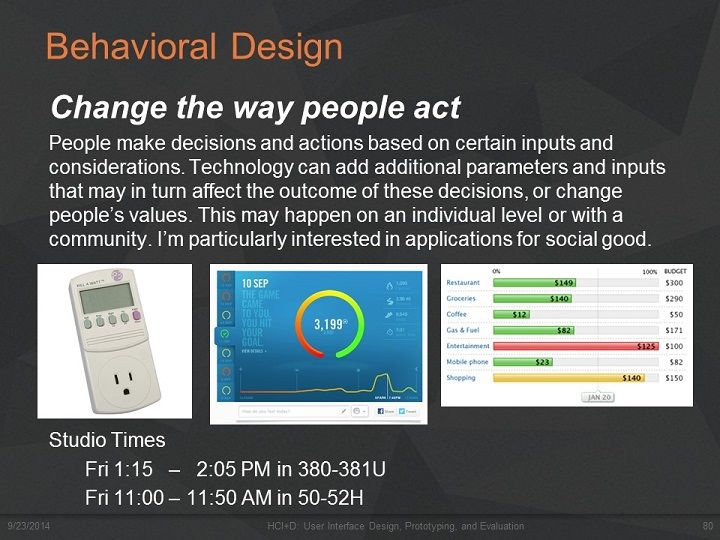
Availability of technology and especially the instant information distribution via mobile devices allows people to consider things in their choices and motivations that would not have been possible otherwise. For example, the introduction of instant messaging changed the way people approach face to face communication. Some are more intentional, for example, the abundance apps that allow people to track their steps so that people are encouraged to be less sedentary. More interested in how this can be used for social goods. |
Wending Lu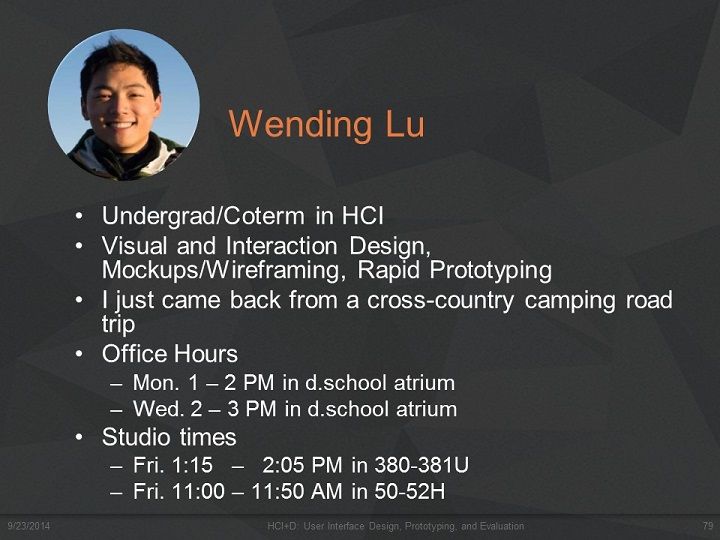
|
Creation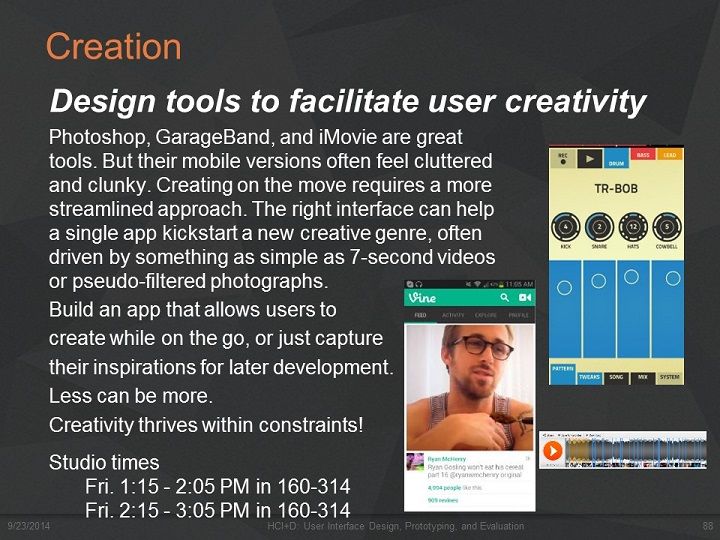
Photoshop, GarageBand, and iMovie are great tools. But their mobile versions often feel cluttered and clunky. Creating on the move requires a more streamlined approach. The right interface can help a single app kickstart a new creative genre, often driven by something as simple as 7-second videos or pseudo-filtered photographs. Build an app that allows users to create while on the go, or quickly capture their inspirations for later development. Less can be more. Creativity thrives within constraints! |
Harrison Wray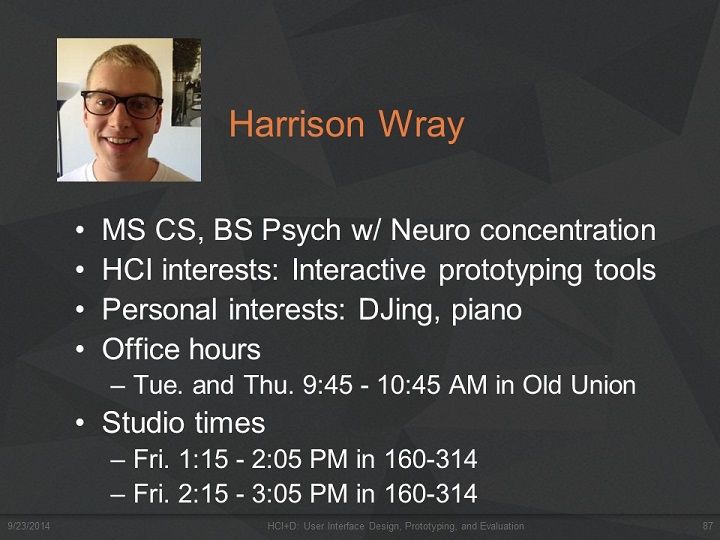
|
Crowd Power
Collective Action is any action taken by a group of people to achieve a common goal. Technology can empower new models of collective action such as crowdsourcing and crowdfunding. For instance, Kickstarter has been gathering the crowd to fund a new product. Games with a purpose such as Foldit have used the power of the crowd to help the researchers with scientific advancements. Wikipedia, the largest encyclopedia, is another example of achieving ambitious goals using the crowd. Technology can also provide powerful tools to support offline collective actions as it lowers the boundaries of communication. One example in this regard is Twitter and Facebook which substantially supported the uprisings in the Arab Spring. |
Negar Rahmati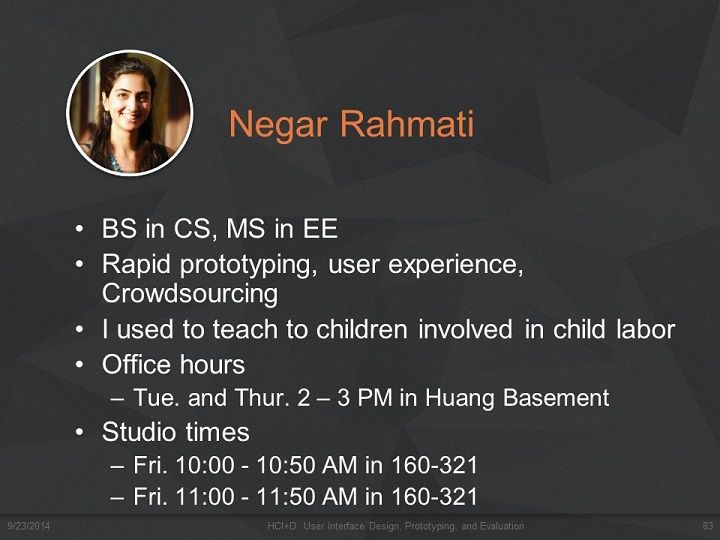
|
Discovery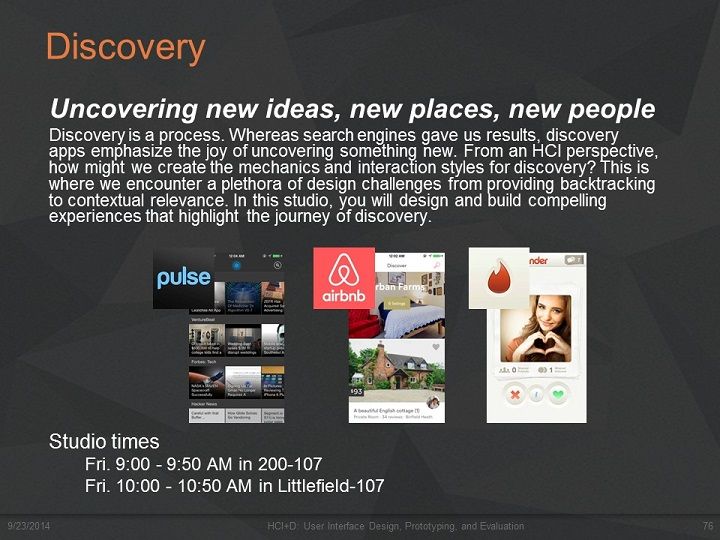
Discovery is a process. Whereas search engines gave us results, discovery apps emphasize the joy of uncovering something new. From an HCI perspective, how might we create the mechanics and interaction styles for discovery? This is where we encounter a plethora of design challenges from providing backtracking to contextual relevance. In this studio, you will design and build compelling experiences that highlight the journey of discovery. |
Nicole Zhu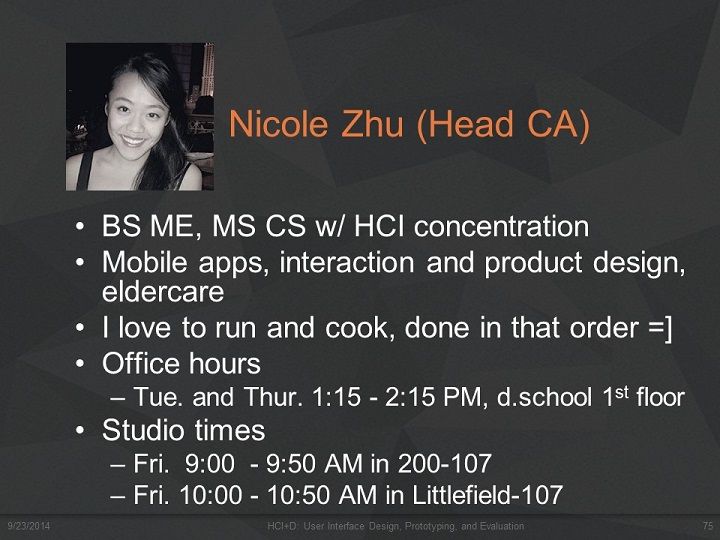
|
Information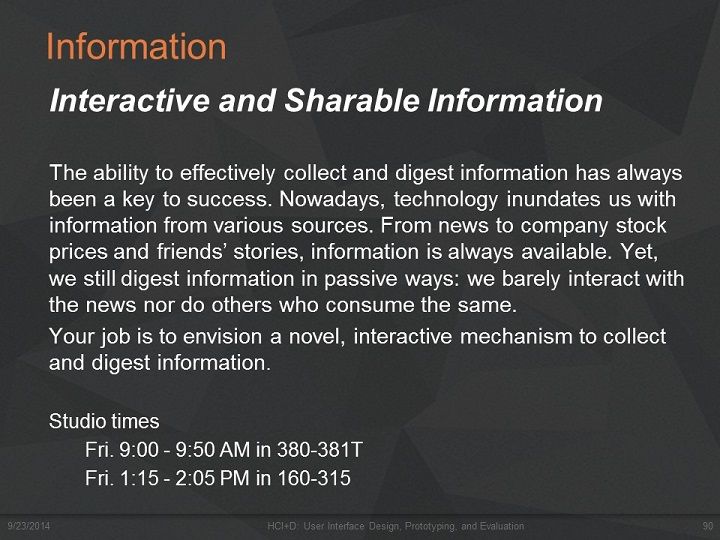
The ability to effectively collect and digest information has always been a key to success. On the battlefield, for example, obtaining a key piece of intelligence can mean the difference between winning and losing. In business, those with better information often see more opportunities. Nowadays, technology inundates us with information in diverse forms and from various sources. From International and local news to company stock prices, sports news and stories of your friends, information is always available. Although we’ve greatly improved accessibility to news, we still digest information in primitive ways: we are often fed it passively and we barely interact with the news nor do others who consume the same. Your job is to envision a novel, interactive mechanism for people to digest new information (the definition of information can be taken broadly). Take advantage of your wildest imagination and be bold in your ideas! |
Hongxia Zhong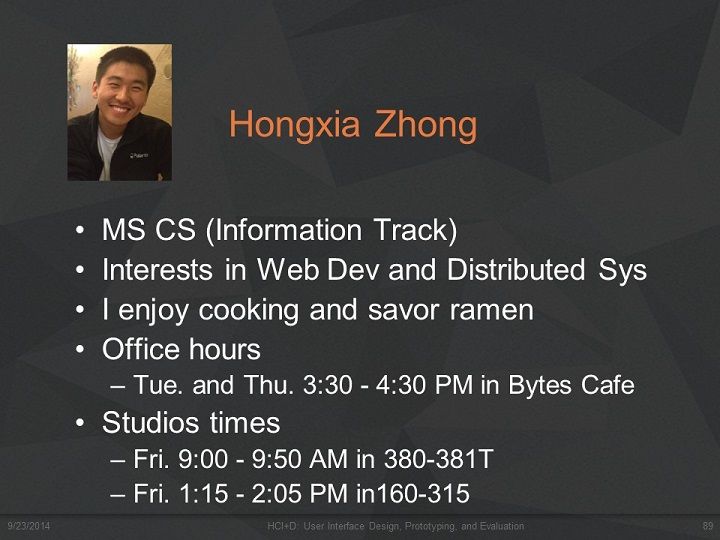
|
Learning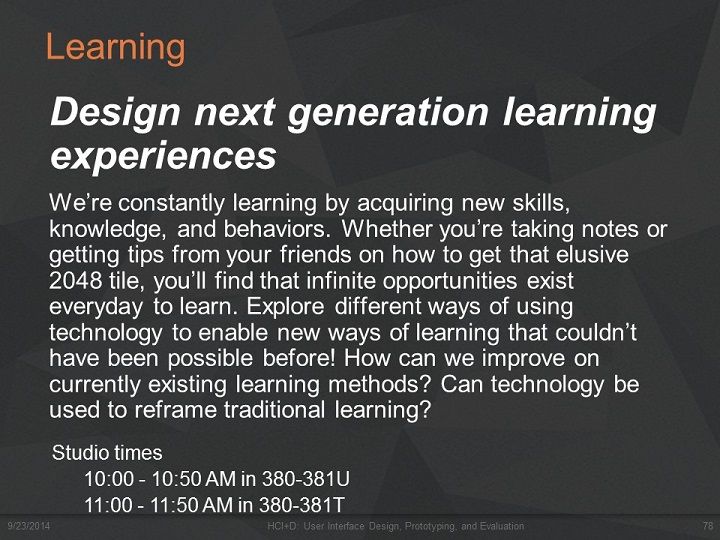
Starting from our first breath, we’re constantly learning by acquiring new skills, knowledge, and behaviors. Whether it’s sitting in class taking notes or getting tips from your friend on how to get that elusive 2048 tile, you’ll find that infinite opportunities exist everyday to learn. In this studio, you’ll explore different ways of using technology to enable new ways of learning that couldn’t have been possible before. How can we improve on currently existing learning methods? Can technology be used to reframe how we traditionally construe learning? MOOCs (Massive Open Online Courses), Piazza, language-learning apps - you create what comes next! |
Makiko Fujimoto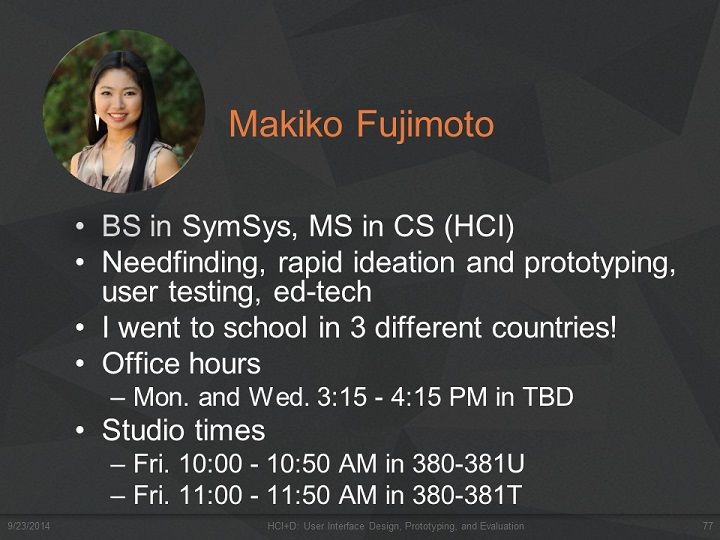
|
Motivation & Achievement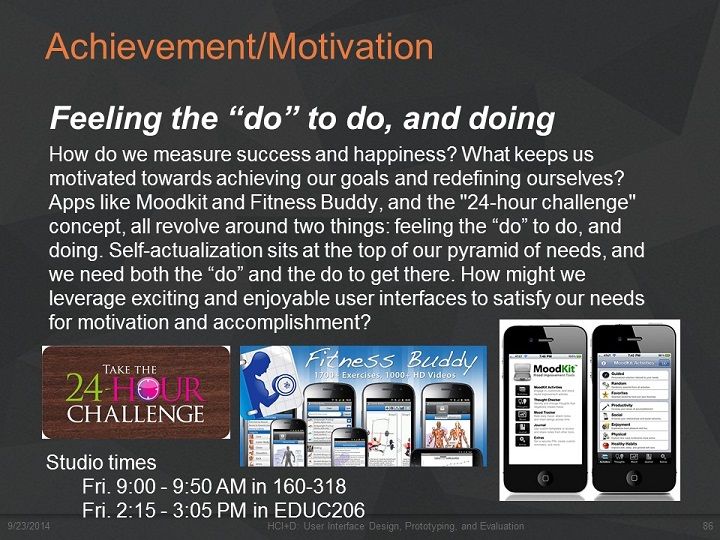
How do we measure success and happiness? What keeps us motivated towards achieving our goals and redefining ourselves? The surge of social media apps such as Facebook and Twitter over the last decade has made it easier than ever to be connected to our peers and to share our lives with them in real time. We have also witnessed the birth of apps such as Moodkit - the app that helps you improve your mood, as well as the plethora of fitness apps and apps designed to help you accomplish your goals. Adding a social component can rapidly propel an idea to popularity, e.g. the "24-hour challenge" concept, which turns achievement and motivation into a social game. How might we combine social media with achievement-focused applications to create the most exciting and enjoyable user experience? |
Justin Salloum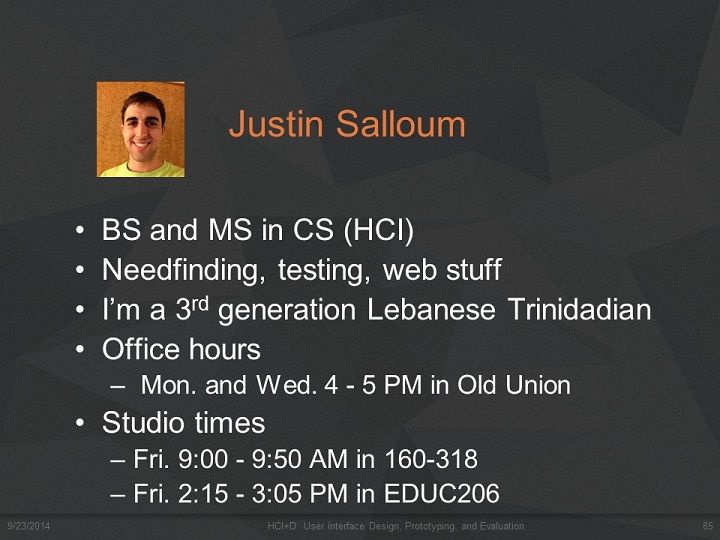
|
Sustainability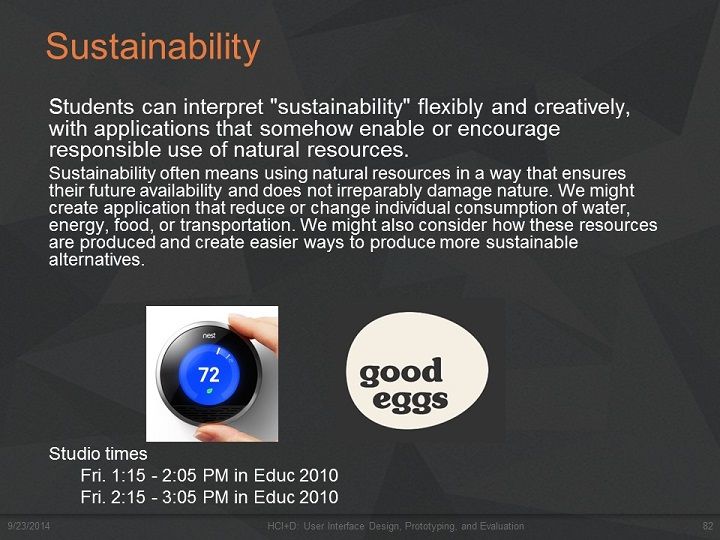
Sustainability often means using natural resources in a way that ensures their future availability and does not irreparably damage nature. We often think sustainability involves reducing or changing individual consumption of water, energy, food, and transportation. However, we might also consider how these resources are produced. For example, the environmental impact of one kilowatt hour of energy depends on whether it is produced at a wind farm or a coal power plant. Students can interpret "sustainability" flexibly and creatively, with applications that somehow enable or encourage responsible use of natural resources. |
Jess Peterson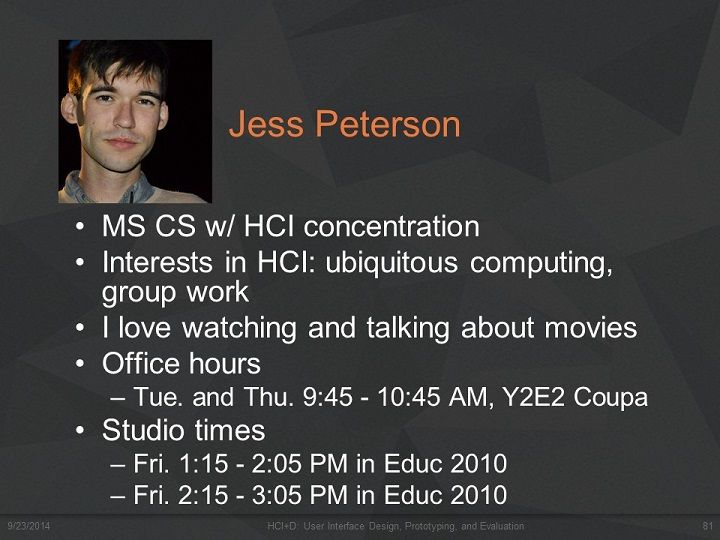
|